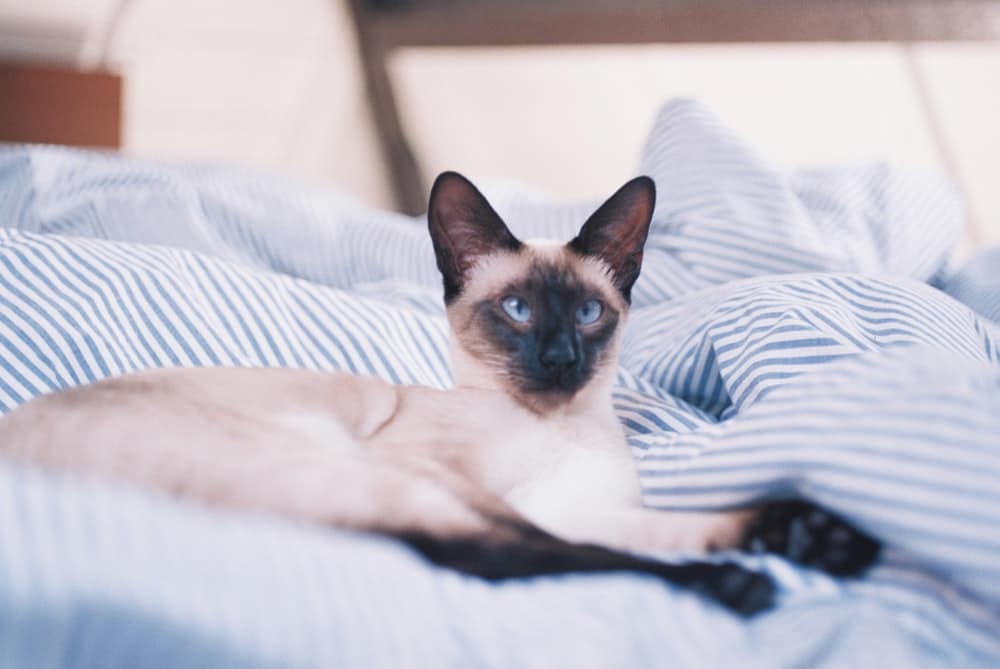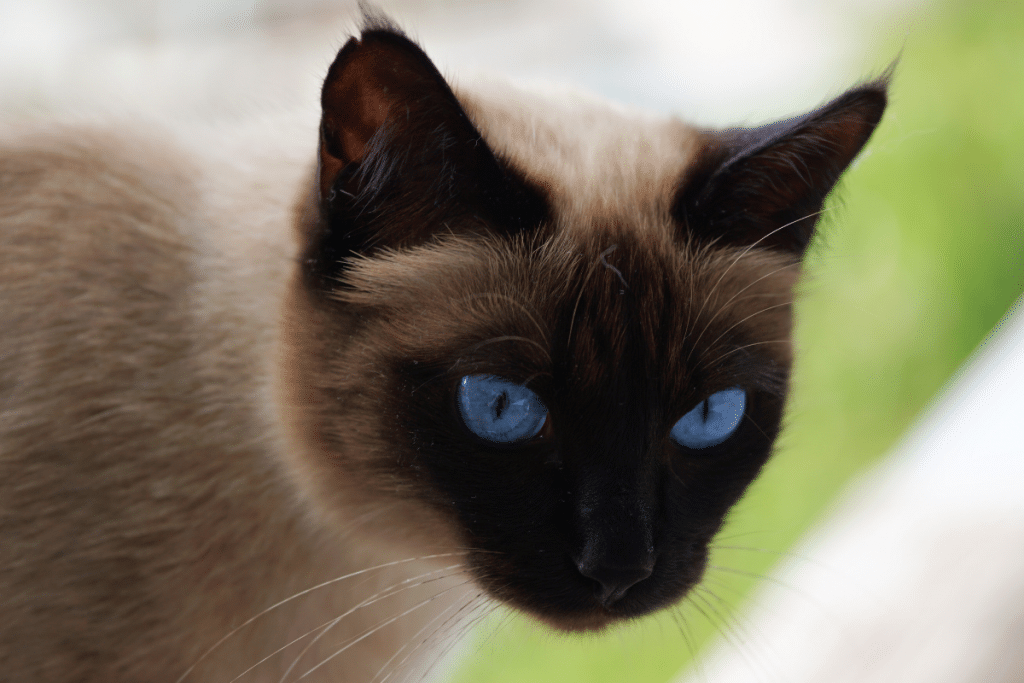Siamese cats are known for their attractive personalities and striking physical traits. However, this breed also has high social requirements, and demands more attention than most other cat breeds. The affectionate nature comes naturally to Siamese cats, but in certain cases, it can evolve into excessive neediness. While this behavior might feel adorable to some cat lovers, it can become exasperating for others.
Regardless, Siamese cats should always be healthily attached to their loved ones, and this attachment should be facilitated through various methods and approaches.
Reasons that a Siamese cat Might Become Needy or Clingy:
Like we mentioned, the Siamese cat breed is more sociable and affectionate than many others, and feeds off attention and interaction.
However, there are times when these cats might become abnormally needy, and caregivers need to pay attention to the reasons behind this excessive – and even unhealthy – neediness.
Boredom
Alongside being loving and tender, Siamese cats are also very playful. This means that they prefer being occupied and engaged, and this preference is enhanced by their comparatively high level of intelligence.
So, it is not uncommon for Siamese cats to turn unusually needy in the absence of any entertaining or stimulating activities.
If you are unable to spend time with your Siamese cat, you can arrange some interactive activities or cat toys that will keep them happy and busy. Toys that a Siamese cat might enjoy playing with include boxes, tunnels, feather toys, puzzles, and even rattling toys.
If your cat has a shy personality, you should consider creating a comfortable window spot for them. Siamese cats enjoy observing the world, and might appreciate jumpers or perches.
Loneliness
Since the Siamese cat is relatively more sociable, it has a greater tendency to feel lonely or isolated.
If your Siamese cat does find itself lonely, especially if it does not see you around for extended periods, it might become far needier and clingier.
In such situations, you should consider hiring a pet sitter or even getting a second Siamese cat. This way, your furry friend will be able to enjoy the social interactions that they so crave during the times that you are unavailable.
Reasons that Siamese Cats Need a High Amount of Attention:
Siamese cats have greater social attention requirements than most other cat breeds. You will be hard-pressed to find a breed that is more interactive, loving, and demanding than the Siamese cat.
These traits are part of a Siamese cat’s genetic makeup, and are ones that are highly lovable and adorable.
However, these traits also make these cats more sensitive and vulnerable to any alterations in social interaction.
The good news is that, while Siamese cats do require and appreciate attention from the people they love, it is not always mandatory for their happiness.
Siamese cats thrive in family households, as such households allow these cats to receive attention and love from different sources.
You should allow your cats to be part of your family activity or gatherings, as all this extra attention will go a long way in enhancing their satisfaction and happiness.
My Siamese cat Keeps Following Me Around – Is This Healthy?
Siamese cats often follow their owners or even stay at their heels. This breed loves to be around its trusted owners and participating in and experiencing the day-to-day activities happening around the house.
Siamese cats appreciate this proximity with their owners, and might enjoy observing you as you go about doing your everyday tasks. Following their parents or caregivers around is the most common way that Siamese cats express their affection.
It is quite natural for Siamese cats to seek affection or attention from their owners by following them around. However, there are instances where such behavior is neither natural nor healthy.
If you stay away from your home for long periods at a stretch, your Siamese cat might get desperate for your presence and start following you around as soon as you return.
While you might find this behavior heartwarming, it might affect your cat’s living environment in the long run.
You should ensure that your absence does not make your Siamese cat feel unsafe or insecure, as such feelings can cause various negative outcomes.
Hence, observe how frequently your cat follows you around, alongside keeping a close eye on their general demeanor and mood. By comparing their current behavior with your previous experiences, you will be able to determine if your cat is behaving normally or not.
At the end of the day, nobody knows your cat like you do, which makes you the perfect person to determine the normality or abnormality of its behavior or actions.
By focusing on your cat’s norms, you can detect any unhealthy elements and try to find and address the root cause behind those elements. Try to spend as much time as possible with your Siamese cats to make sure that their attention needs are being fulfilled.
What if Siamese Cats Do Not Receive Sufficient Attention?
If a Siamese cat continues to fail to receive the attention that it requires, it might lead to a variety of negative outcomes.
Such situations might negatively impact your cat’s overall health and happiness and, in certain cases, even the composure and calmness of your house.
Negative attention
If a Siamese cat becomes increasingly desperate for attention, it might feel the need to resort to destruction in order to obtain that attention.
For example, it might start to scratch different objects, claw at your furniture, or indulge in constant and large-scale misbehavior.
While a Siamese cat does not prefer going down this route, it is, like we said, a result of its desperation.
The primary reason behind going down this route is to trigger a reaction from one of the residents of the house – regardless of whether the reaction is positive or negative.
If you find yourself in such a situation, you should try to limit your responses as much as possible – giving into your cat’s theatrics is only going to provide further encouragement.
Instead, you should concentrate on trying to address the root cause of your cat’s behavior, and create a kind of environment where it will not become so desperate for attention.
Like we said, you could try adding another compatible pet in order to promote attention and social interaction. However, make sure that you introduce the new pet in a proper and gradual manner, in order to prevent feelings of rivalry or jealousy.
Separation anxiety
If your Siamese cat is being left alone in the house for long periods of time, it might lead to separation anxiety.
Cats with separation anxiety become afraid, confused, and frightened; they spend entire days by the door, awaiting the return of their favorite human. Naturally, cats dealing with such feelings lose their appetite, and end up becoming seriously ill.
If you think that your Siamese cat is suffering from separation anxiety, you could leave a few of your belongings behind with your cat (clothing, for example).
If your cat can detect your scent, it will feel connected to you and remain calm. Once again, having multiple pets can also go a long way in alleviating separation anxiety in Siamese cats.
Behavioral changes
There are times when Siamese cats start to display odd behavior or attitudes when starved of attention.
Siamese cats, in general, place a lot of trust in human beings – and feelings of neglect can cause this trust to start fading away.
In such situations, Siamese cats might become depressed, excessively sensitive, insecure, or just plain aggressive.
Final Word
To conclude, the need for social engagement and interaction just comes naturally to Siamese cats. However, as an owner of a Siamese cat, you need to be able to differentiate between normal and unhealthy neediness, as the latter can lead to a range of negative outcomes for yourself, your cat, and even your household. If your Siamese cat is being unnaturally needy, we hope that this blog will help you nail down and deal with the reason behind such behavior.



